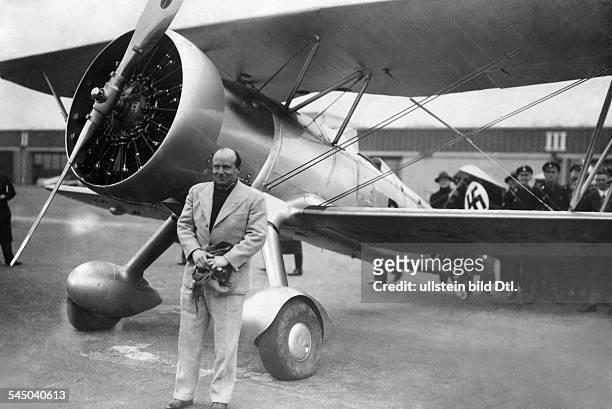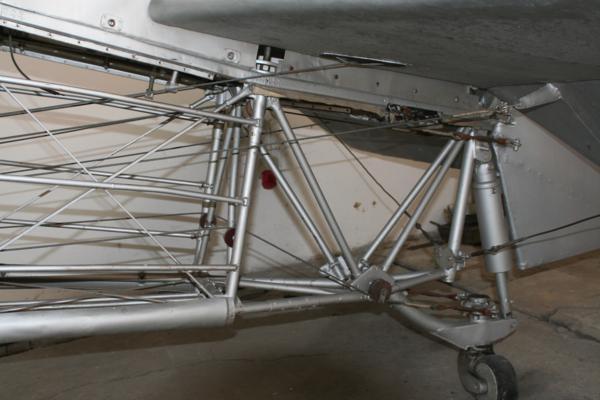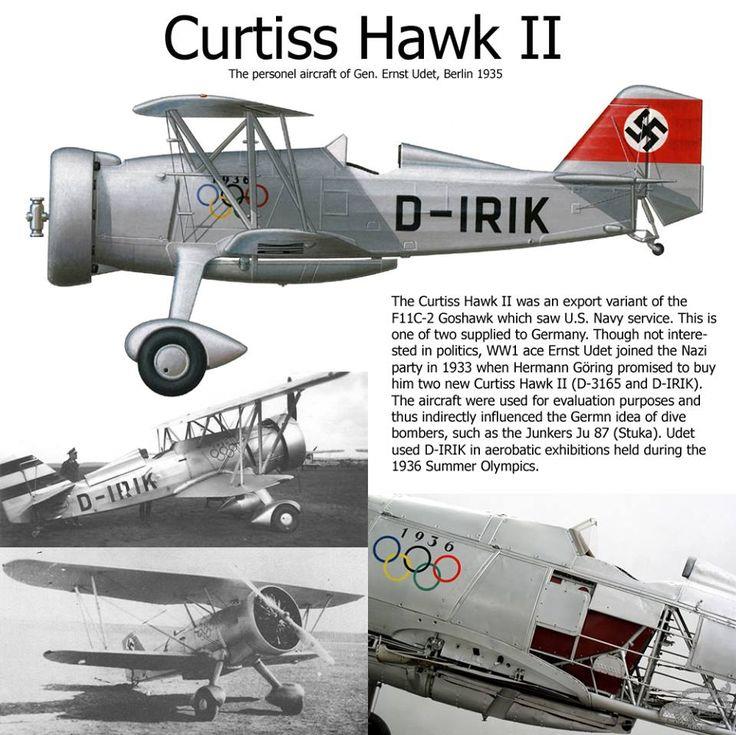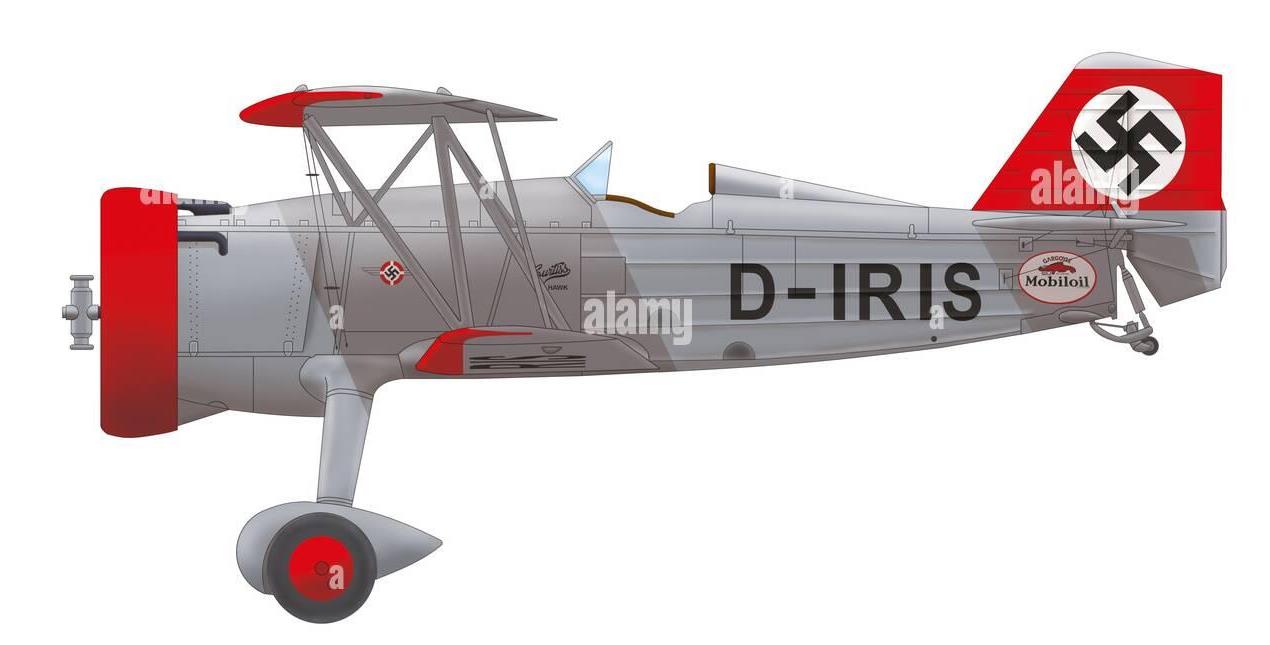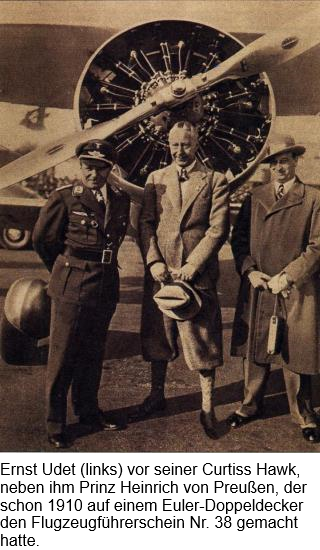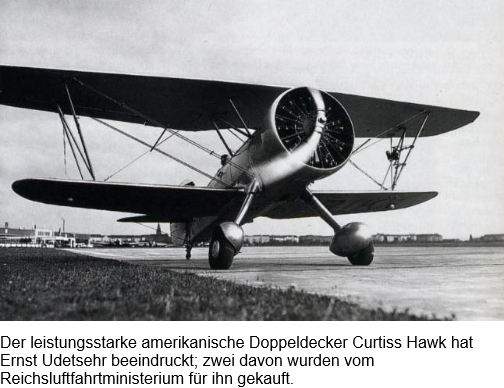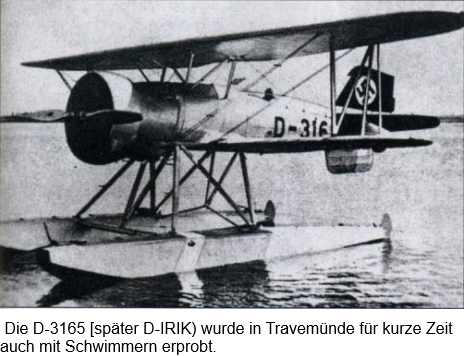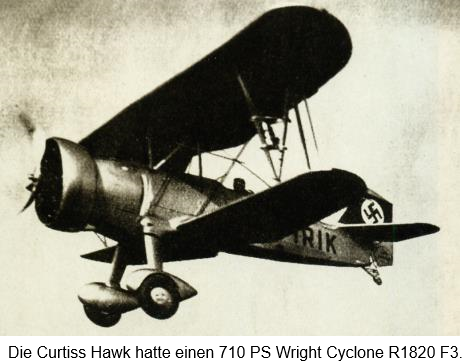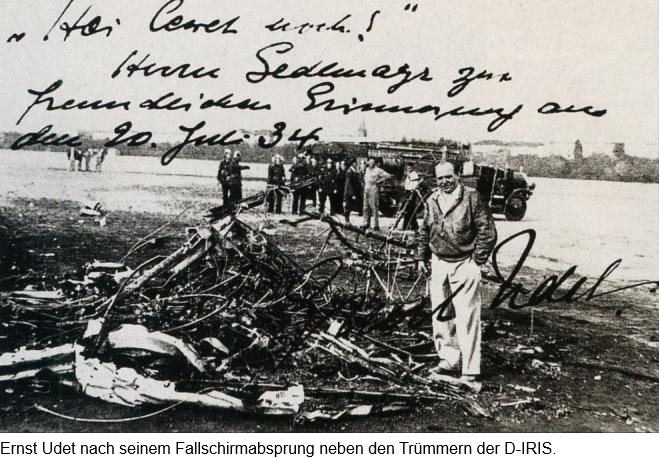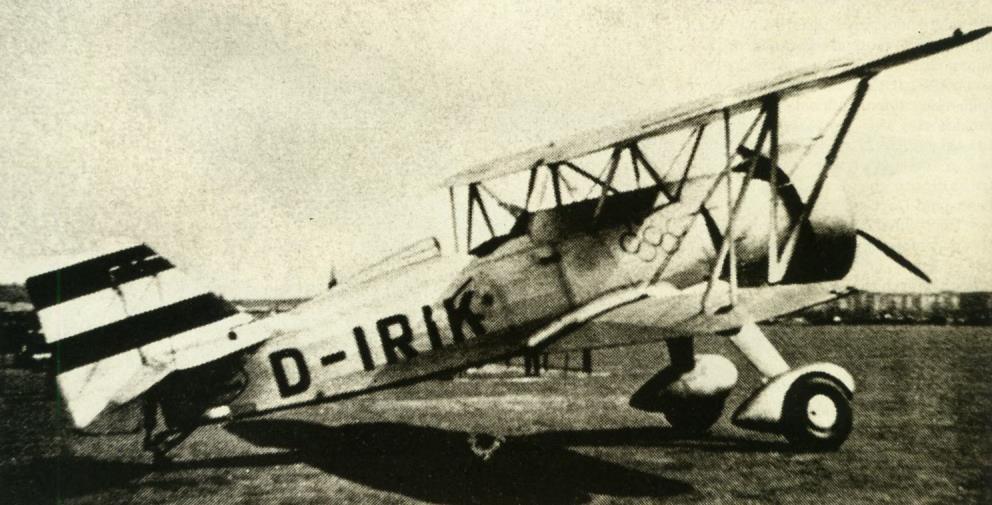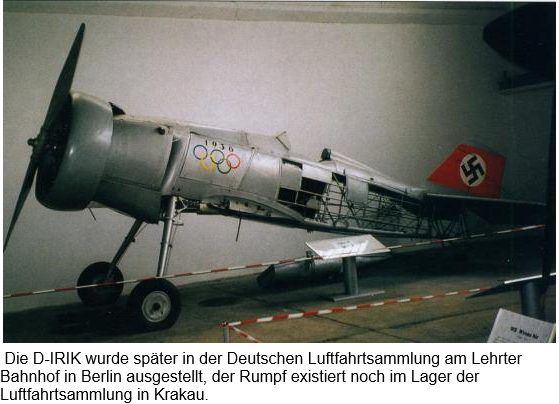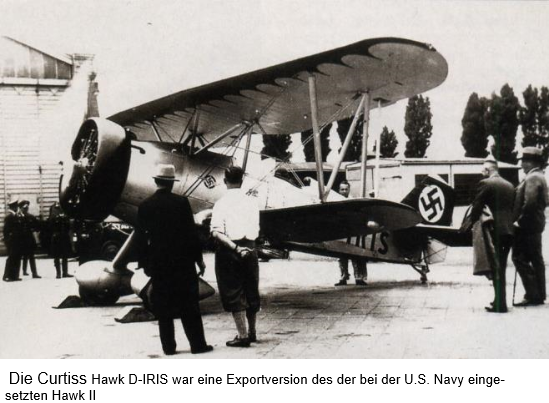| Type |
Single seat fighter |
| Engine |
1 Wright R-1820-78 Cyclone with : 3-bladed metal propeller |
| Dimensions |
Length 6,88 m , height 2,96 m , span 9,60 m, wing area 24,3 m2 ,airfoil: root: Clark Y: tip: Clark Y |
| Weights |
Empty 1378 kg, loaded 1874 kg, max. take off weight |
| Performance |
Max.. speed 325 km/h , cruising speed 240 km/h , range 940 km, endurance , service ceiling 7700 m , climb 12 m/sec. |
| Type |
Werk.Nr |
Registration |
History |
| 35BF11C.2 Hawk |
|
D-3165, D-IRIK |
E.Stelle Rechlin |
| 35BF11C.2 Hawk |
|
D-3164, D-IRIS |
E.Stelle Rechlin |
| 35BF11C.2 Hawk |
|
D-3166, D-ISIS |
E.Stelle Tarnewitz, E.Stelle Rechlin |
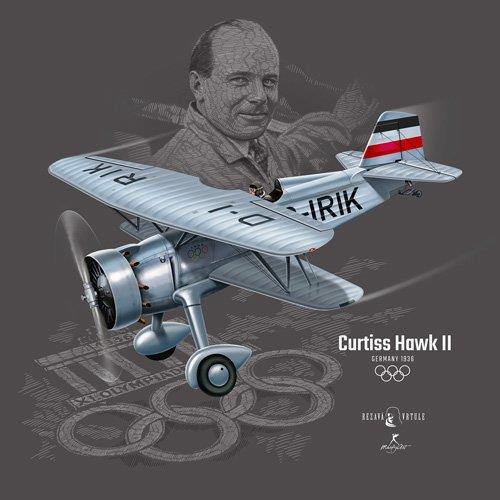
The Hawk II was a member of the ubiquitous Curtis Hawk family that provided sterling service to both the US Army and Navy, plus several export customers (it was in fact the only Hawk version to be exported in quantity). The Hawk II was essentially an export version of the XFIIC-2 with a Wright R1820-F3 Cyclone engine.
Most export sales were made over the period of 1932-34, and so occurred just before the biplane fighter concept was to be superceded by monoplane designs in many air forces. Turkey took 19, Colombia 26 floatplanes, and Bolivia 9 of which 3 had interchangeable floats. Other customers included Chile 4, China 52, Cuba 4, Norway 1, Peru 4, Siam/Thailand 12 and Germany 2.
This last customer purchased two after Ernst Udet observed Al Williams in a Curtis Gulfhawk I demonstrating precision dive-bombing attacks at the US National Air Races. He was so impressed that he arranged for two Hawks to be imported to Germany. Udet was placed in charge of the Reich Air Ministry’s Development Wing; and this experience and is said to have had a significant influence on the Luftwaffe’s adherence to dive-bombing. These Hawk II’s were also used for aerobatics displays at the 1936 Olympics.
Hawk II’s saw combat between Peru & Colombia, Bolivia & Paraguay (in the Gran Chaco War), China & Japan, Siamese/Thai Hawks fought against the French in Indochina, and for one day against the Japanese prior to a cease-fire being agreed.

